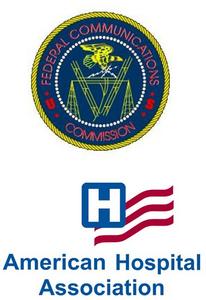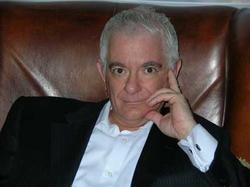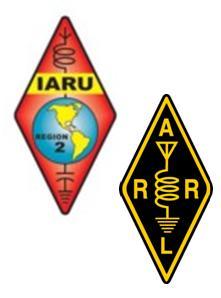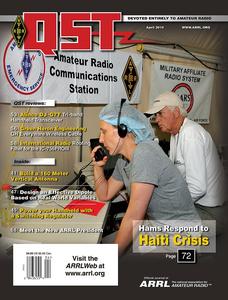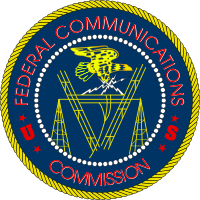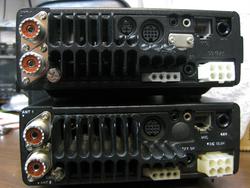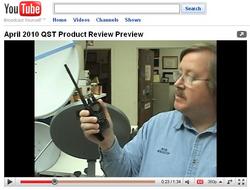 March 11, 2010 John E. Ross, KD8IDJ, Editor
| |||||||||||
Legislative Affairs: ARRL Requests Support for S 1755
Senate Bill 1755 -- The Amateur Radio Emergency Communications Enhancement Act of 2009 introduced in October 2009 by Senators Joe Lieberman (ID-CT) and Susan Collins (R-ME) -- has unanimously passed the US Senate and has been sent to the US House of Representatives for consideration and now sits in the House Committee on Energy and Commerce. The ARRL is asking its membership to contact the leadership of the Energy and Commerce committee, requesting support and action on moving S 1755 through the committee. S 1755 accomplishes the same things as HR 2160; HR 2160 was introduced in April 2009 by Rep Sheila Jackson Lee (D-TX-18). Since S 1755 has already been approved by the Senate, moving it forward in the House will simplify the process. Click here for more information, including instructions on how to encourage the committee's leadership to support S 1755. FCC News: FCC Seeks Comments for Blanket Waiver to Allow Amateur Radio in Hospital Emergency Drills
In February 2010, the American Hospital Association (AHA) filed a request with the FCC for a blanket waiver of Section 97.113(a)(3) of the Commission's Rules "to permit hospitals seeking accreditation to use Amateur Radio operators who are hospital employees to transmit communications on behalf of the hospital as part of emergency preparedness drills." On March 3, the FCC issued a Public Notice -- WP Docket 10-54 -- seeking comments if the Commission "should grant AHA's request for a blanket waiver of Section 97.113(a)(3) to permit amateur operators who are hospital employees to participate in emergency drills that are conducted by hospitals for accreditation purposes and that are not government-sponsored." Section 97.113(a)(3) specifically prohibits amateur stations from transmitting communications "in which the station licensee or control operator has a pecuniary interest, including communications on behalf of an employer." Instructions on how to paper file or file electronically are listed in the Public Notice. Read more here. ARRL Recognizes: Bob Schroeder, N2HX, Awarded 2009 Bill Orr, W6SAI, Technical Writing Award
H. Robert "Bob" Schroeder, N2HX, of Ewing, New Jersey, has been named the winner of the ARRL Foundation's 2009 Bill Orr, W6SAI, Technical Writing Award for his article "Electromagnetic Pulse and Its Implications for EmComm" that appeared in November 2009 issue of QST. The editorial staff commented on Schroeder's article, saying that "the topic of nuclear EMP is somewhat esoteric by itself, let alone discussing its impact on Amateur Radio, yet the author did an outstanding job of making the subject matter understandable even to the relatively non-technical ham. His writing is clear and to the point, offering practical advice not only for EMP mitigation as it applies to the unlikely event of a nuclear burst, but also extending the same principles to mitigation for lightning damage." Read more here. ARRL Seeks Input for New IARU Region 2 Band Plan
The International Amateur Radio Region 2 conference -- held later this year in El Salvador -- brings together delegations from the national Amateur Radio Societies in the Western Hemisphere. One of the topics on the agenda will be the Region 2 HF band plan. This band plan is "harmonized with" -- spectrum management-speak for "very similar to" -- the IARU Region 1 and Region 3 band plans. At this year's conference, the IARU Member-Societies will consider possible changes to the Region 2 band plan. The ARRL is cooperating with this procedure by inviting input to be sent to the ARRL Board of Directors' Band Planning Committee. The committee will review the existing Region 2 band plan, consider input from the amateur community and make recommendations to the ARRL Board for submission to IARU Region 2. Read more here. Coming Up in QST : Look for Your April Issue to Arrive Soon!
The April issue of QST is jam-packed with all sorts of things today's Amateur Radio operator needs. From product reviews to experiments to contesting -- including the official ARRL Rookie Roundup announcement and a report on how hams responded to the crisis in Haiti -- the upcoming issue of QST has something for just about everyone. You'll find an abundance of technical and general interest articles, as well as monthly columns such as Happenings, How's DX, Hamspeak, Vintage Radio and more. Click here to discover what's in store for you in the April issue of QST, the official journal of the ARRL. FCC News : Administrative Law Judge Says Washington State Licensee Can Keep Ham License In January 2007, the FCC issued an Order to Show Cause to David L. Titus, KB7ILD, of Seattle, Washington, to justify why his General class Amateur Radio license should not be revoked and initiated a hearing process to determine whether Titus "is qualified to remain a Commission licensee" in light of a 1993 felony conviction at the age of 18 for "communicating with a minor for immoral purposes." According to the FCC order, Titus received a 25-month prison sentence for this act, and the Seattle Police Department has identified him as a registered sex offender. On March 9, Administrative Law Judge Richard L. Sippel issued his Initial Decision -- saying that Titus " has been a law-abiding member of his community for many years" and ordered that Titus' license should not be revoked based on the evidence presented by the defendant and witnesses on his behalf, as well as the FCC's Enforcement Bureau failure to meet the burden of proof necessary for revocation. The FCC has said that The Communications Act of 1934, as amended provides that the Commission may revoke any license if conditions come to its attention that would warrant a denial of the licensee's original application. In the past, the Commission has said that felony convictions, "especially those involving sexual offenses involving children," raise questions regarding a licensee's character qualifications. Sippel's Initial Decision shall become effective "and this proceeding shall be terminated 50 days after its release if exceptions are not filed within 30 days thereafter, unless the Commission elects to review the case on its own motion." FCC News : FCC Amateur Radio Enforcement Correspondence Posted
The FCC has posted new Amateur Radio enforcement correspondence on its "Amateur Radio Service Enforcement Actions" Web page. Laura Smith, Special Counsel in the FCC's Enforcement Bureau, sent a letters to the Sacramento (California) Municipal Utility District and to Northwestern Energy of Helena, Montana; Northwestern Energy also received letters voicing these same matters in March and September 2009. These letters concerned received complaints that equipment operated by these utilities may be causing harmful interference to Amateur Radio operators. Direct all questions about the Amateur Radio Service Enforcement Actions Web postings via e-mail only to the FCC Enforcement Bureau. Hints and Kinks: Painting Letters This idea comes to us from Dave Price, K4KDP, of Goldsboro, North Carolina. As I get older, I find it is harder to read some of the smaller print on my radios. The ICOM 706 is a good example. The radio connectors are marked ANT 1, ANT 2, MIC and DC 13.8V, just to name a few. These are marked by either raised letters or letters that are indented into the radio housing. I found that if I paint these letters white, they show up much better on the black metal case. There is a fairly easy way to paint the letters white using cotton swabs with wooded sticks.
Break off the cotton tip on some of the swabs until you have about six of them with sharp points at the break area. Throw away the cotton tip and use only the wooden stick to paint with. Now spray a small puddle of white paint onto a piece of cardboard. The cardboard will absorb some of the moisture. Just as the paint starts to thicken dip the pointed end of the stick into the paint and then gently tap the paint into the indented area of the radio housing. On raised letters I use the blunt end of the stick, repeating the same process. It is best to use very little paint and repeat the process of dipping into the paint and tapping the paint onto the letters many times (see Figure 1). You will find you have to replace the stick several times and spray a new puddle of paint when the old puddle gets too thick. You will also need to have some small paper towels and rubbing alcohol close by to quickly clean up any mistakes. I strongly recommend you practice this on some junk metal before attempting this on your expensive radios. I have also used this same trick on unpainted numbers for my Chevy truck 4 wheel drive shift mounted on the truck floor and for my watch bezel to make the unpainted numbers easier to read. Do you have an idea or a simple project that has improved your operating? Maybe you've taken something commonly found around the home and developed a ham radio use for it? Why not share your hints with fellow hams in "Hints and Kinks," a monthly column in QST. If we publish your hint in QST, you will receive $20. Send your hints via e-mail or to ARRL Headquarters, Attn: "Hints and Kinks," 225 Main Street, Newington, CT 06111. Please include your name, call sign, complete mailing address, daytime telephone number and e-mail address. Solar Update
Tad "Here, as I point my sword, the Sun arises" Cook, K7RA, reports: We experienced a bit of a scare this week when four days went by with no sunspots. That's right -- for the first time in three months, we saw more than a single day with a sunspot number of zero. The previous period was back in 2009, November 23-December 8. Until March 6, there were just three days since then with no sunspots, each a bit less than two weeks apart, December 25, January 6 and January 19. On Wednesday, sunspot 1054 emerged in the northeastern quadrant of the visible solar disc, and just south of the center of the field another sunspot is emerging. Observation via the STEREO mission reveals possibly a third spot that may appear over the eastern limb on Friday or Saturday. Currently STEREO can view a little more than 88 percent of the Sun. Sunspot numbers for March 4-10 were 40, 35, 0, 0, 0, 0 and 12, with a mean of 12.4. The 10.7 cm flux was 81.3, 79.5, 78.3, 76.6, 76.3, 77.9 and 80.3, with a mean of 78.6. Look for more information on the ARRL Web site on Friday, March 12, including more information on emerging spots, as well as some reported unseasonable sporadic-E propagation. For more information concerning radio propagation, visit the ARRL Technical Information Service Propagation page. This week's "Tad Cookism" brought to you by William Shakespeare's Julius Caesar (Act II, Scene 1). This Week on the Radio
This week, the Feld Hell Sprint is March 13. The RSGB Commonwealth Contest, the Elecraft QSO Party and the Idaho QSO Party are March 13-14. The North American Sprint (RTTY) and the SKCC Weekend Sprint are March 14. The Wisconsin QSO Party is March 14-15 and the NAQCC Straight Key/Bug Sprint is March 18. Next week, the 10-10 International Mobile Contest is March 20. The Russian DX Contest, the Oklahoma QSO Party and the North Dakota QSO Party are March 20-21. The Virginia QSO Party and the BARTG HF RTTY Contest are March 20-22. The Run for the Bacon QRP Contest is March 22 and the SKCC Sprint is March 24. All dates, unless otherwise stated, are UTC. See the ARRL Contest Branch page, the ARRL Contest Update and the WA7BNM Contest Calendar for more info. Looking for a Special Event station? Be sure to check out the ARRL Special Event Station Web page. ARRL Continuing Education Course Registration
Registration remains open through Sunday, March 21, 2010, for these online course sessions beginning on Friday, April 2, 2010: Amateur Radio Emergency Communications Level 1; Antenna Modeling; Radio Frequency Interference; Antenna Design and Construction; Ham Radio (Technician) License Course; Propagation; Analog Electronics, and Digital Electronics. To learn more, visit the CEP Course Listing page or contact the Continuing Education Program Coordinator.
| |||||||||||

